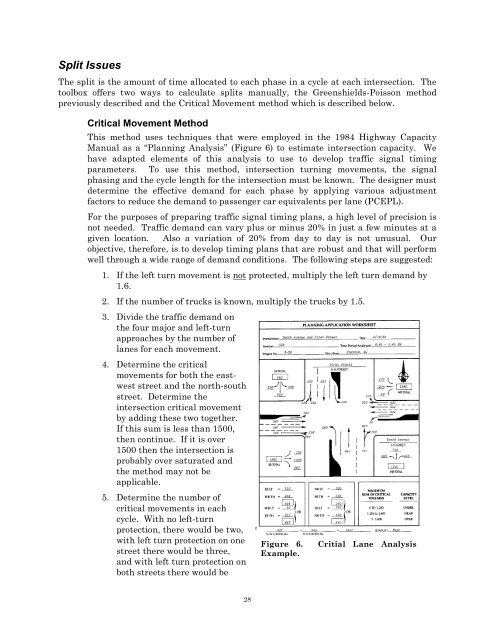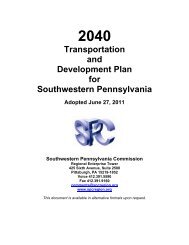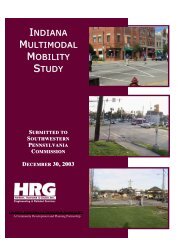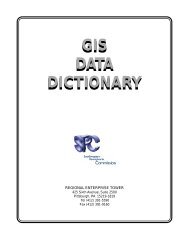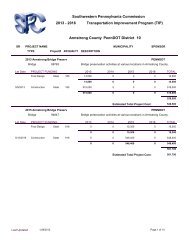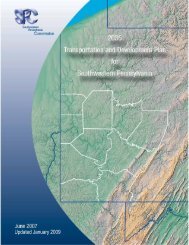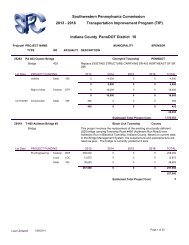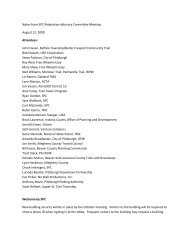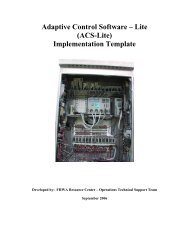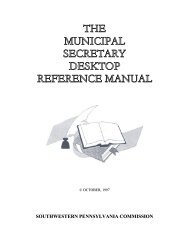FHA Signal Timing On A Shoestring
FHA Signal Timing On A Shoestring
FHA Signal Timing On A Shoestring
You also want an ePaper? Increase the reach of your titles
YUMPU automatically turns print PDFs into web optimized ePapers that Google loves.
Split Issues<br />
The split is the amount of time allocated to each phase in a cycle at each intersection. The<br />
toolbox offers two ways to calculate splits manually, the Greenshields-Poisson method<br />
previously described and the Critical Movement method which is described below.<br />
Critical Movement Method<br />
This method uses techniques that were employed in the 1984 Highway Capacity<br />
Manual as a “Planning Analysis” (Figure 6) to estimate intersection capacity. We<br />
have adapted elements of this analysis to use to develop traffic signal timing<br />
parameters. To use this method, intersection turning movements, the signal<br />
phasing and the cycle length for the intersection must be known. The designer must<br />
determine the effective demand for each phase by applying various adjustment<br />
factors to reduce the demand to passenger car equivalents per lane (PCEPL).<br />
For the purposes of preparing traffic signal timing plans, a high level of precision is<br />
not needed. Traffic demand can vary plus or minus 20% in just a few minutes at a<br />
given location. Also a variation of 20% from day to day is not unusual. Our<br />
objective, therefore, is to develop timing plans that are robust and that will perform<br />
well through a wide range of demand conditions. The following steps are suggested:<br />
1. If the left turn movement is not protected, multiply the left turn demand by<br />
1.6.<br />
2. If the number of trucks is known, multiply the trucks by 1.5.<br />
3. Divide the traffic demand on<br />
the four major and left-turn<br />
approaches by the number of <br />
lanes for each movement.<br />
4. Determine the critical<br />
movements for both the east-<br />
west street and the north-south<br />
street. Determine the<br />
intersection critical movement<br />
by adding these two together.<br />
If this sum is less than 1500,<br />
then continue. If it is over <br />
1500 then the intersection is<br />
probably over saturated and<br />
the method may not be<br />
applicable.<br />
5. Determine the number of <br />
critical movements in each<br />
cycle. With no left-turn<br />
protection, there would be two,<br />
with left turn protection on one<br />
street there would be three,<br />
and with left turn protection on<br />
both streets there would be<br />
Figure 6.<br />
Example.<br />
Critial Lane Analysis<br />
28


